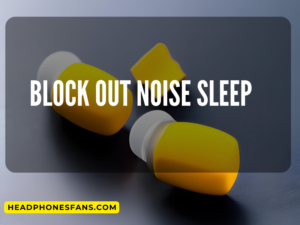A rich, resonant low-frequency sound is a sensory experience. Music lovers and audiophiles always search for the best equipment that can deliver those important low frequencies. The subwoofer enclosure is a crucial component of your audio system that can enhance the bass quality.
Subwoofer enclosures, or subwoofer boxes, are specially designed cabinets in which subwoofer drivers are mounted. Your choice of enclosure can have a significant impact on the sound produced by your subwoofer. It could mean the difference between a deep and resonant bass, or a flat and lifeless bass.
This article will examine the various types of subwoofer enclosures, and how they affect your overall sound system performance. We will direct you to the relevant resources available on our site, so that you can gain a better understanding of audio components and accessories.
- Sealed Subwoofer Enclosures
- Ported Subwoofer Enclosures
- Bandpass Subwoofer Enclosures
- Selecting the Right Enclosure
- Create The Right Audio Environment
- It’s Not All About the Bass
- The Key Element of Sound Quality: Room Acoustics and Positioning
- Proper Amplification is Important
- The conclusion of the article is:
Sealed Subwoofer Enclosures
Sealed boxes provide the most basic form of enclosure for subwoofers. These are airtight, fully sealed enclosures that produce excellent sound with a deep bass response. These boxes are more compact and easier-to-build than other enclosures, making them an excellent choice for those who have limited space or are new to car audio.
A sealed enclosure is simpler and less likely to have phase cancellation problems, which results in a more accurate and cleaner bass response. They do, however, require more power in order to achieve high sound pressure levels. You can find a detailed comparison of audio equipment, including their power requirements on our Comparison Page.
Ported Subwoofer Enclosures
Subwoofer enclosures with ports or vents are also popular. These boxes feature one or more openings (ports) along with the speaker hole. This allows air to flow in and out.
The ported enclosures can produce a louder bass at the same power level as sealed boxes. These enclosures also have less distortion when played at higher volumes. They are popular among those who like loud bass. They are larger and less accurate than sealed enclosures, but they do have more bass.
Check out our comparison of JBL PartyBox 120 vs JBL PartyBox.
Bandpass Subwoofer Enclosures
Bandpass boxes are one type of ported enclosure that mounts the subwoofers between two chambers. The front chamber has a port, and the rear chamber does not. Sound waves from the rear room are fed into the front chamber and then out the port. This results in high sound pressure levels for certain bass frequencies.
Bandpass enclosures tend to be larger and more complicated than sealed or ported enclosures. These enclosures are used most often in applications that require a very loud bass over a limited range of frequencies.
In one of our blogs, we offer a detailed comparison of the Klipsch R-12SW vs SPL-120 . These two subwoofers would make a big difference in a setup with a bandpass enclosure.
Selecting the Right Enclosure
It’s not just about choosing between sealed, bandpass, or ported enclosures. Understanding your listening preferences, as well as the space available for installation, is important. The best subwoofer under 500 will help you choose a subwoofer to meet your budget and installation space requirements while still delivering the sound you desire.
A sealed box is the best choice if you prefer deep bass with accuracy and have an amplifier that can handle it. If you want a louder, more powerful bass, and to make the most of your amplifier’s power, then a ported-box might be better for you. A bandpass box is a good option if you want high volume in a specific frequency range.
Design and intended use of the subwoofer are also important. Some subwoofers work better in specific enclosures, so you should always consider the manufacturer’s suggestions when planning your subwoofer set-up.
Some premium subwoofers, such as those in the Yamaha TSR700 vs Denon S760H Comparison, perform best when paired with certain enclosure types. When combined with the correct enclosure, these products with their high-quality components and advanced engineering can really shine.
Create The Right Audio Environment
It’s important to choose the right subwoofer enclosure for your setup. However, it is only a small part of a larger audio system. The wire that connects your subwoofer and amplifier can have an impact on the sound. In our article CL2 wire vs. CL3 wire, we explore the nuances and differences of speaker wires.
The type of tweeter you use in your sound system will also have a significant impact on the overall sound quality. This Ribbon vs Dome comparative review offers an in-depth look at the world of Tweeters and gives you valuable insights on how they can improve your sound system.
It’s Not All About the Bass
Subwoofers can be used to enhance the bass of your audio system. However, you should not overlook the importance a well-balanced soundstage. From the lowest bass to the highest treble, a good audio system will reproduce all frequencies accurately. This guide to the Best Speakers for Classical Music offers valuable insight into the world high-fidelity, balanced sound.
Remember that an audio system well designed goes beyond just the equipment. The system also takes into account the listener’s preferences, the environment in which they are listening, and the music that is being played. In a compact vehicle, the same subwoofer could produce dramatically different results than in a large room with acoustically treated walls.
Check out our article on How to Choose an AV Receiver to learn more about these factors. It also dives deep into the heart and soul of an audio system, as well as the many factors that can impact your listening experience.
Keep an eye out for the last section of this post, in which we’ll dig deeper into room acoustics, and give practical tips to maximize your subwoofer’s performance regardless of enclosure type.
The Key Element of Sound Quality: Room Acoustics and Positioning
The room acoustics, and the positioning of the subwoofer are equally important. You won’t get the most out of your sound system if you don’t optimize it for your room. According to our analysis of common problems in home theaters, the room acoustics are a major factor.
Positioning the subwoofer in the room will also have a dramatic effect on the bass response. The bass can boom in some spots, but be weaker in others. You can experiment with the placement of your subwoofer to find the best results.
Headphones are a whole different game. The sound from headphones bypasses the room’s acoustics, unlike speakers or subwoofers. There are still important things to consider before purchasing headphones. These include the way noise-canceling headsets work, and the difference between noise isolating and noise cancelling headphones.
Proper Amplification is Important
It’s important to have the right amplifier for your subwoofer, whether you use it in a car audio or home theater system. The choice of amplifier can have a dramatic impact on the performance of the subwoofer. This review of the top 1000 watt amp will help you better understand how important amplifiers are to a sound system.
The conclusion of the article is:
The enclosure you select for your subwoofer can have an impact on the final sound. Each enclosure design, from bandpass to sealed and ported, has unique characteristics that suit different musical tastes. The performance of your system is determined by the combination of your subwoofer, enclosure, amplifier and listening environment.
Check out our recommendations for more in-depth reviews and comparisons, including speakers, subwoofers, and headphones. HeadphonesFans.com is your one-stop shop for all things audio.
This article will hopefully provide you with some useful information about subwoofer enclosures, and help you to create an audio system for maximum enjoyment.

Hey there mobile audio lovers! My name is Darlene R, founder and chief editor at headphonesfans.com. Ask any mobile audio fanatic, installer, or company rep what makes a good car speaker, sub or amp, or, better yet, why he or she prefers a certain brand over another, and be prepared to endure a litany of opinions, viewpoints, and passion-fueled perspectives. To be honest, mobile audio shopping can be a daunting task without a guide, so I’ve assembled what I feel are the best products to consider to make things easier for you. Welcome headphonesfans.com!





